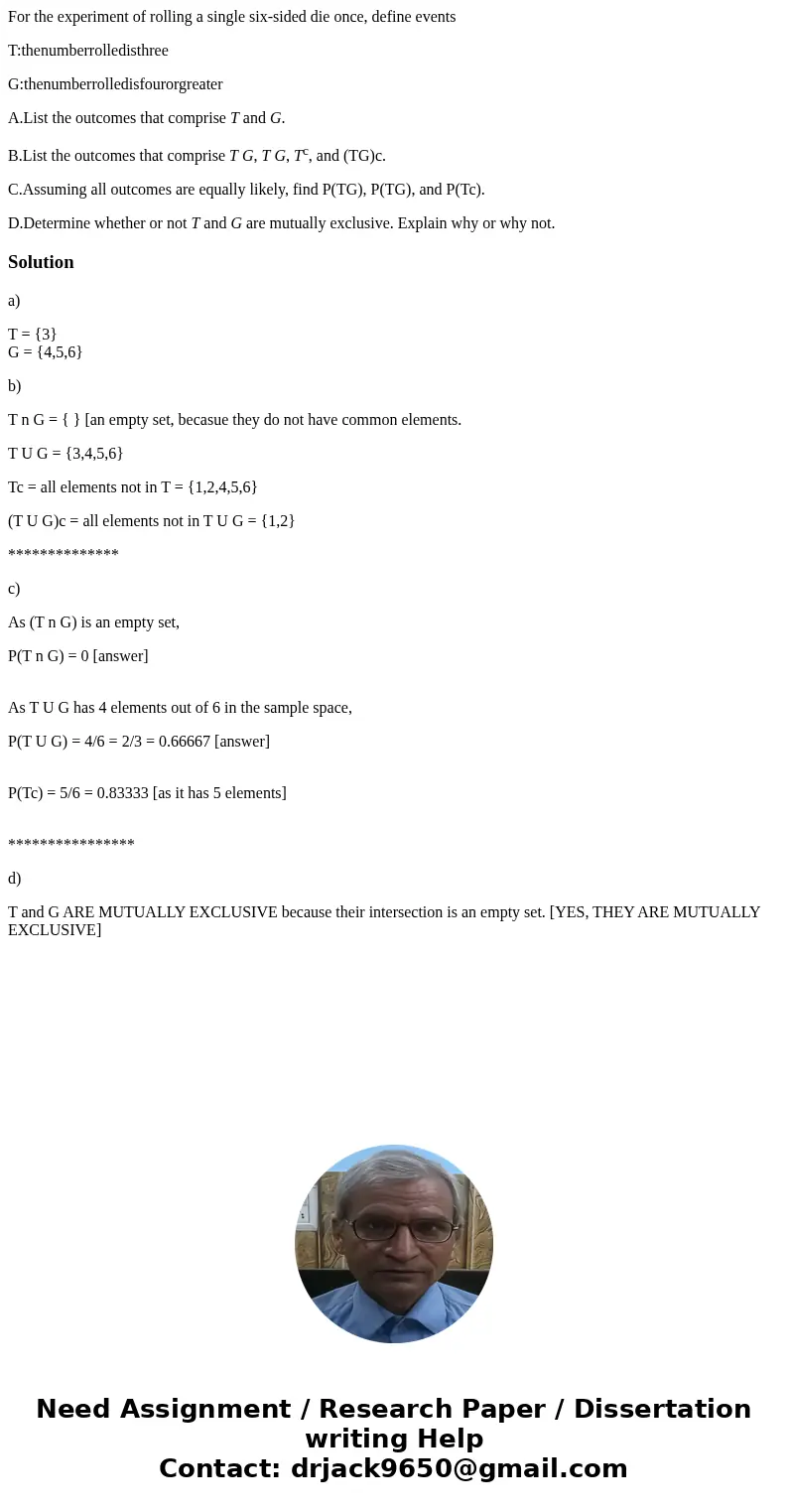For the experiment of rolling a single sixsided die once def
For the experiment of rolling a single six-sided die once, define events
T:thenumberrolledisthree
G:thenumberrolledisfourorgreater
A.List the outcomes that comprise T and G.
B.List the outcomes that comprise T G, T G, Tc, and (TG)c.
C.Assuming all outcomes are equally likely, find P(TG), P(TG), and P(Tc).
D.Determine whether or not T and G are mutually exclusive. Explain why or why not.
Solution
a)
T = {3}
G = {4,5,6}
b)
T n G = { } [an empty set, becasue they do not have common elements.
T U G = {3,4,5,6}
Tc = all elements not in T = {1,2,4,5,6}
(T U G)c = all elements not in T U G = {1,2}
**************
c)
As (T n G) is an empty set,
P(T n G) = 0 [answer]
As T U G has 4 elements out of 6 in the sample space,
P(T U G) = 4/6 = 2/3 = 0.66667 [answer]
P(Tc) = 5/6 = 0.83333 [as it has 5 elements]
****************
d)
T and G ARE MUTUALLY EXCLUSIVE because their intersection is an empty set. [YES, THEY ARE MUTUALLY EXCLUSIVE]

 Homework Sourse
Homework Sourse